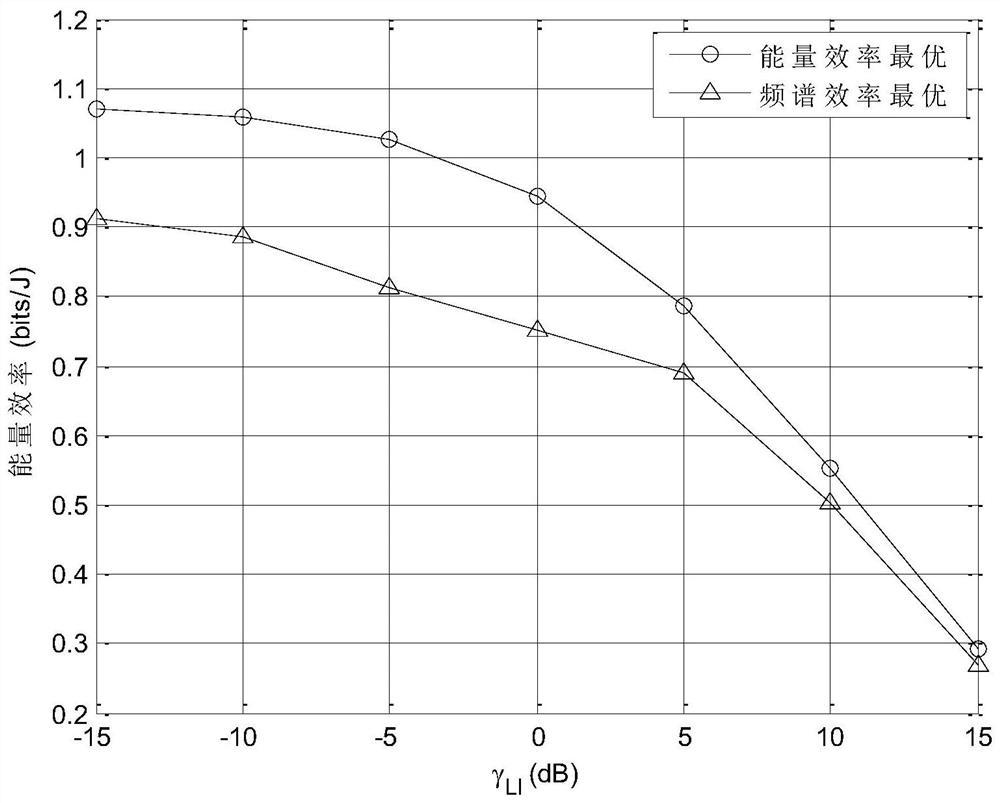Transmit power optimization method for double-hop full-duplex relay system based on energy efficiency
A transmission power and energy efficiency technology, which is applied in the field of transmission power optimization of double-hop full-duplex relay systems based on energy efficiency, can solve problems such as low information rate and self-interference, and achieve high energy efficiency, low complexity, and convenient The effect of engineering realization
- Summary
- Abstract
- Description
- Claims
- Application Information
AI Technical Summary
Problems solved by technology
Method used
Image
Examples
Embodiment Construction
[0031] The present invention will be described in detail below through a preferred embodiment and in conjunction with the accompanying drawings.
[0032] A typical application scenario of the present invention is to jointly optimize source transmit power and relay transmit power by constructing an optimization problem that is constrained by system transmit power constraints and minimum spectrum efficiency constraints and maximize system energy efficiency. The optimization process is to first fix the transmit power of the source, optimize the transmit power of the relay, then fix the transmit power of the relay, optimize the transmit power of the source, and repeat the alternate optimization steps of the transmit power of the relay and the source until the system reaches the maximum energy efficiency. Such as figure 1 As shown, the energy efficiency-based transmission power optimization method of the double-hop full-duplex relay system disclosed in the embodiment of the presen...
PUM
 Login to View More
Login to View More Abstract
Description
Claims
Application Information
 Login to View More
Login to View More - R&D
- Intellectual Property
- Life Sciences
- Materials
- Tech Scout
- Unparalleled Data Quality
- Higher Quality Content
- 60% Fewer Hallucinations
Browse by: Latest US Patents, China's latest patents, Technical Efficacy Thesaurus, Application Domain, Technology Topic, Popular Technical Reports.
© 2025 PatSnap. All rights reserved.Legal|Privacy policy|Modern Slavery Act Transparency Statement|Sitemap|About US| Contact US: help@patsnap.com



